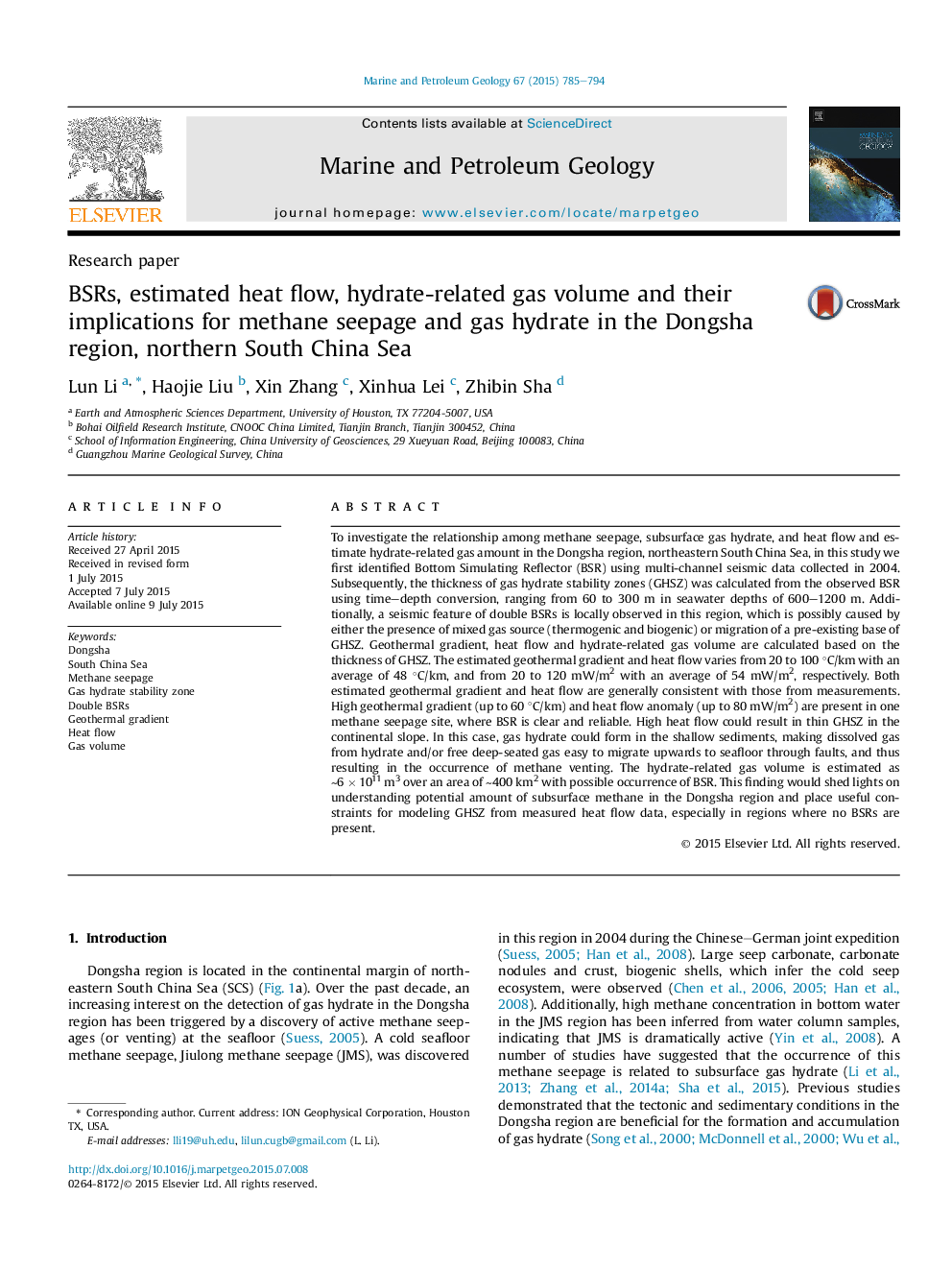| کد مقاله | کد نشریه | سال انتشار | مقاله انگلیسی | نسخه تمام متن |
|---|---|---|---|---|
| 6434985 | 1637159 | 2015 | 10 صفحه PDF | دانلود رایگان |

- Geothermal gradient and heat flow are estimated from gas hydrate stability zone thickness.
- Relationship among methane venting, gas hydrate, and heat flow is discussed.
- Hydrate-bound gas volume is estimated in the Dongsha region.
- Possible double BSRs are observed and their causes are investigated.
To investigate the relationship among methane seepage, subsurface gas hydrate, and heat flow and estimate hydrate-related gas amount in the Dongsha region, northeastern South China Sea, in this study we first identified Bottom Simulating Reflector (BSR) using multi-channel seismic data collected in 2004. Subsequently, the thickness of gas hydrate stability zones (GHSZ) was calculated from the observed BSR using time-depth conversion, ranging from 60 to 300 m in seawater depths of 600-1200 m. Additionally, a seismic feature of double BSRs is locally observed in this region, which is possibly caused by either the presence of mixed gas source (thermogenic and biogenic) or migration of a pre-existing base of GHSZ. Geothermal gradient, heat flow and hydrate-related gas volume are calculated based on the thickness of GHSZ. The estimated geothermal gradient and heat flow varies from 20 to 100 °C/km with an average of 48 °C/km, and from 20 to 120 mW/m2 with an average of 54 mW/m2, respectively. Both estimated geothermal gradient and heat flow are generally consistent with those from measurements. High geothermal gradient (up to 60 °C/km) and heat flow anomaly (up to 80 mW/m2) are present in one methane seepage site, where BSR is clear and reliable. High heat flow could result in thin GHSZ in the continental slope. In this case, gas hydrate could form in the shallow sediments, making dissolved gas from hydrate and/or free deep-seated gas easy to migrate upwards to seafloor through faults, and thus resulting in the occurrence of methane venting. The hydrate-related gas volume is estimated as â¼6 Ã 1011 m3 over an area of â¼400 km2 with possible occurrence of BSR. This finding would shed lights on understanding potential amount of subsurface methane in the Dongsha region and place useful constraints for modeling GHSZ from measured heat flow data, especially in regions where no BSRs are present.
Journal: Marine and Petroleum Geology - Volume 67, November 2015, Pages 785-794